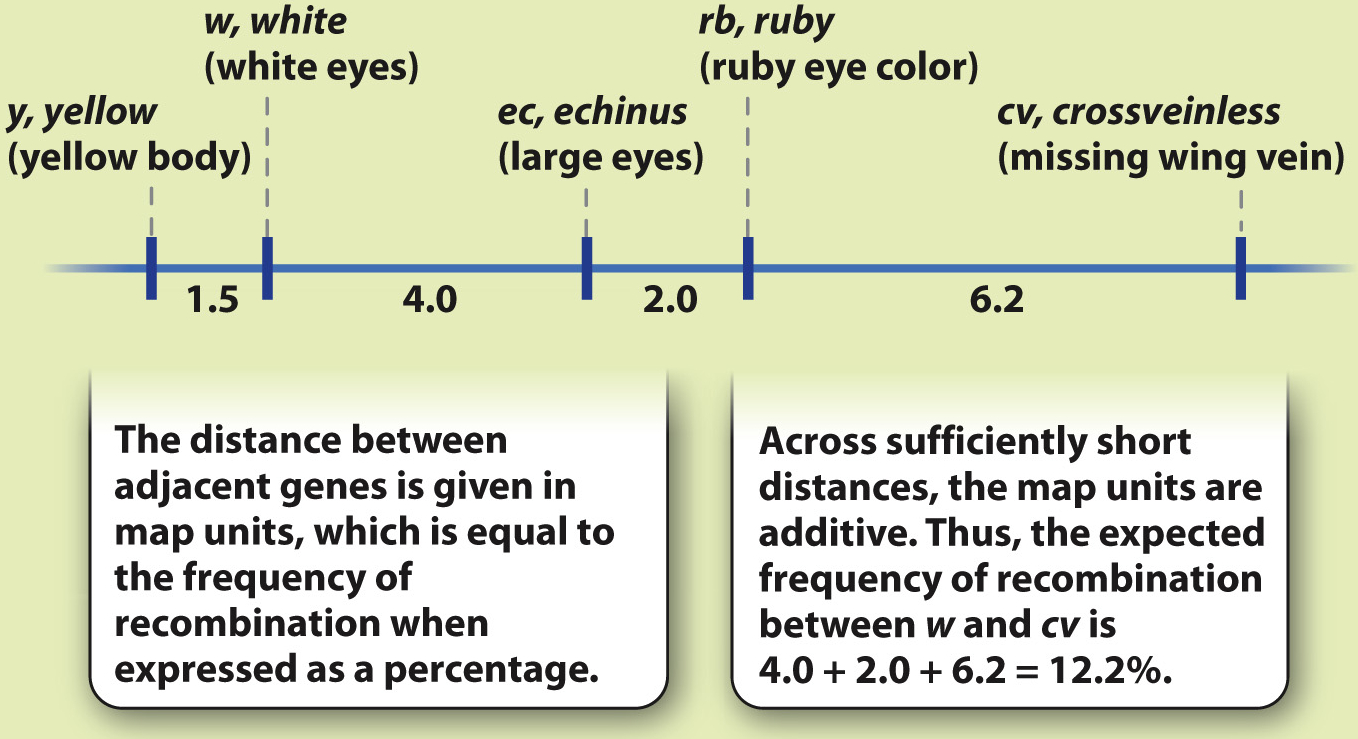HOW DO WE KNOW?
FIG. 17.11
Can recombination be used to construct a genetic map of a chromosome?
BACKGROUND In 1910, Thomas Hunt Morgan discovered X-
HYPHOTHESIS Sturtevant hypothesized that recombination was due to crossing over between the genes, and that genes farther apart in the chromosome would show more recombination.

EXPERIMENT Taking this idea a step further, Sturtevant reasoned that if one knew the frequency of recombination between genes a and b, between b and c, and between a and c, then one should be able to deduce the order of genes along the chromosome. He also predicted that, if the order of genes were known to be a–
RESULTS Sturtevant studied the frequencies of recombination between many pairs of genes along the X chromosome, including some of those shown in the illustration shown here.
CONCLUSION The results confirmed Sturtevant’s hypothesis and showed that genes could be arranged in the form of a genetic map, depicting their linear order along the chromosome, with the distance between any pair of genes proportional to the frequency of recombination between them. Across sufficiently short regions, the frequencies of recombination are additive.
FOLLOW-
SOURCE Sturtevant, A. H. 1913. “The Linear Arrangement of Six Sex-